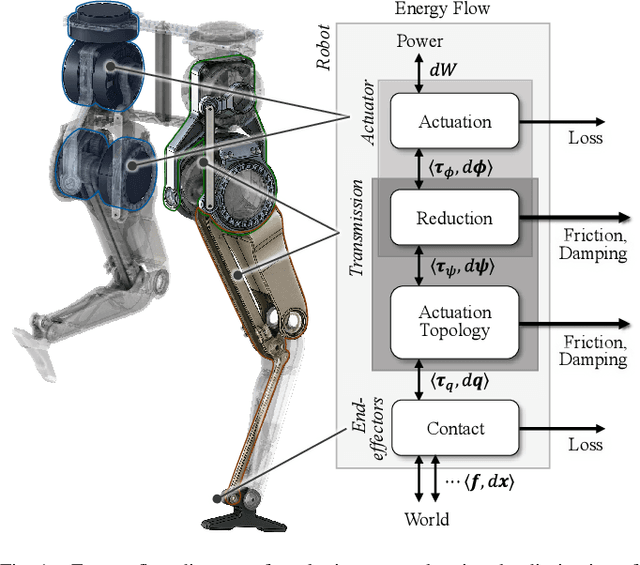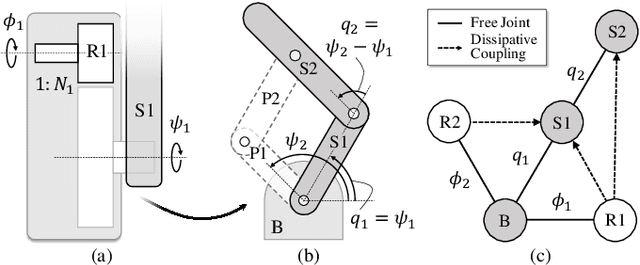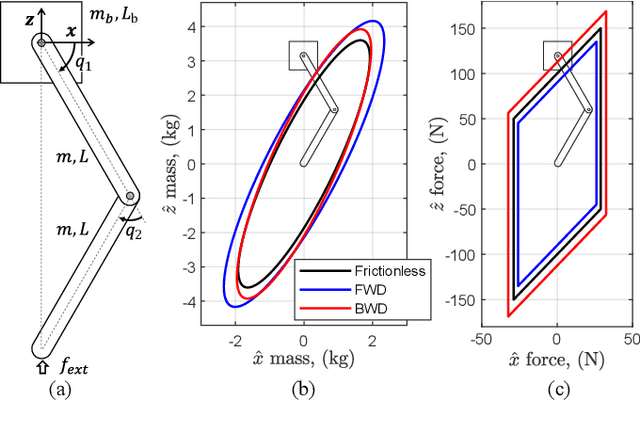The dynamic effect of mechanical losses of transmissions on the equation of motion of legged robots
Paper and Code
Jun 03, 2021



Industrial manipulators do not collapse under their own weight when powered off due to the friction in their joints. Although these mechanism are effective for stiff position control of pick-and-place, they are inappropriate for legged robots that must rapidly regulate compliant interactions with the environment. However, no metric exists to quantify the robot's performance degradation due to mechanical losses in the actuators and transmissions. This paper provides a fundamental formulation that uses the mechanical efficiency of transmissions to quantify the effect of power losses in the mechanical transmissions on the dynamics of a whole robotic system. We quantitatively demonstrate the intuitive fact that the apparent inertia of the robots increase in the presence of joint friction. We also show that robots that employ high gear ratio and low efficiency transmissions can statically sustain more substantial external loads. We expect that the framework presented here will provide the fundamental tools for designing the next generation of legged robots that can effectively interact with the world.
 Add to Chrome
Add to Chrome Add to Firefox
Add to Firefox Add to Edge
Add to Edge